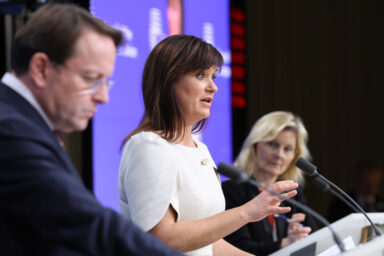Within forty-eight hours of the EU-US trade agreement’s announcement, both sides differed in their interpretations of the deal’s key points. A joint declaration is in the works to align their positions by the week’s end.
The European Union and the United States have clashed over interpretations of a recent tariff deal almost immediately days after announcing it. The European Commission and the US government issued conflicting summaries this week, despite plans for a joint declaration to clean up the mess by the end of the week.
The Commission has repeatedly stressed the deal will boost economic security. But discrepancies emerged in US and EU accounts of commitments on steel tariffs, food standards, digital regulation, energy purchases and defence contracts. The White House released a ‘fact sheet’ on Monday (which the rest of the world may well read as ‘the current Trump mood sheet’), prompting the Commission to issue a rival summary on Tuesday.
Steel, telecoms in doubt
On steel, Washington claims existing tariffs remain unchanged. Brussels insists the parties agreed to duty-free quotas based on historical import volumes, with exact figures still under negotiation. The Commission maintains EU food safety laws and digital regulations will not weaken.
A major dispute centres on telecoms fees. European operators argue US tech giants – including Alphabet, Amazon, Meta, Microsoft and Netflix – should help fund network upgrades to handle surging data traffic. The White House fact sheet states: “The European Union confirms that it will not introduce or maintain network user charges.” The Commission document omits this pledge. “We are not changing our rules,” a spokesperson said.
You might be interested
There is still plenty of horse trading left to do. – Howard Lutnick, US commerce secretary
Defence and energy purchases also split the allies. The White House asserts the EU agreed to buy “significant quantities of US military equipment.” Brussels denies committing to arms deals, calling energy purchase targets non-binding projections based on private sector input.
Motor vehicles in limbo
Questions remain over EU industrial tariffs. The Commission says it will eliminate low duties on US goods while protecting sensitive sectors. It has not confirmed whether high tariffs – such as 22 per cent on trucks and 16 per cent on large vans – will remain in place.
A joint declaration expected this week will formalise the agreement. EU countermeasures will pause only once this text is published. US commerce secretary Howard Lutnick warned: “There is still plenty of horse trading left to do.”
If what the White House published last night is in the treaty, I don’t see a majority for the treaty in the European Parliament. – MEP Bernd Lange (S&D/DEU), head of the EP trade committee
Implementation hurdles loom. Once the declaration is finalised, the Commission must choose a legal path – either adjusting tariffs unilaterally under Article 31 or pursuing legislation via Article 207 with parliamentary approval. Trade expert David Kleimann notes the latter would involve lawmakers.
EP ratification uncertain
EU parliamentarians are already raising objections. MEP Bernd Lange (S&D/DEU), head of the trade committee, argues WTO rules require full parliamentary ratification. “If what the US published last night through the White House is in the treaty, then I don’t see a majority for the treaty in the European Parliament,” he said on Tuesday. Mr Lange insists only a formal trade deal would satisfy WTO “most favoured nation” principles.
The Commission maintains it retains full authority over digital regulation and tariff policy. But with Washington and Brussels at odds on key points, the coming days will clarify whether their declaratory harmony can survive contact with legal reality.










